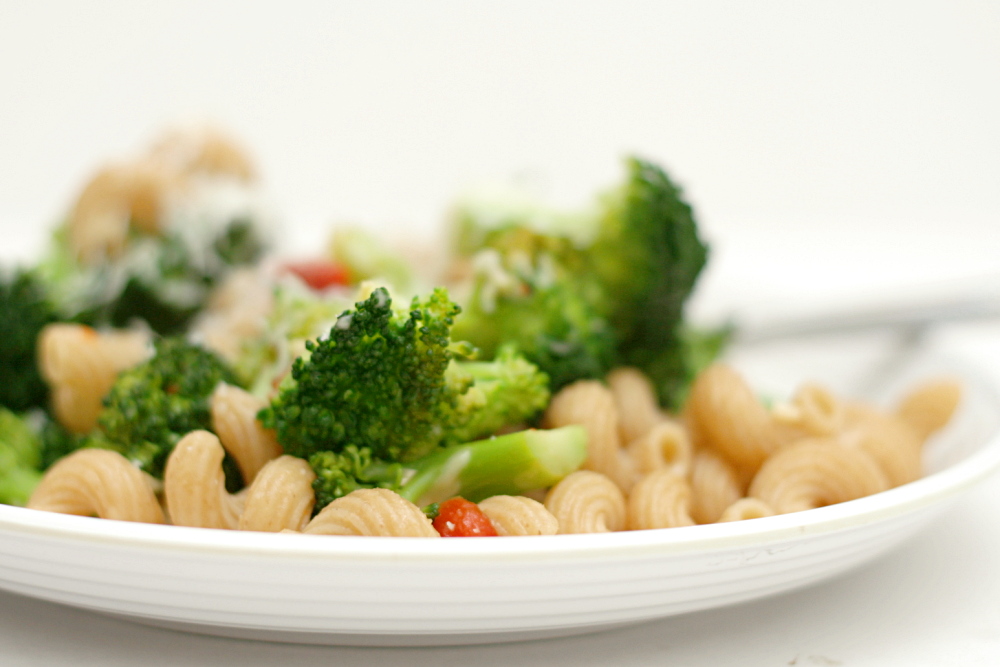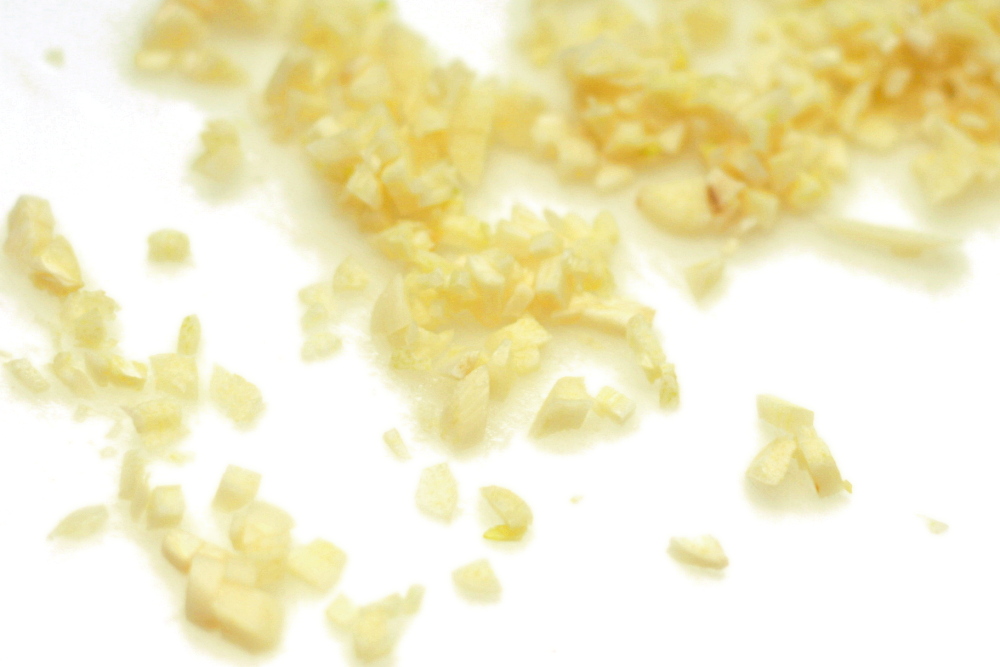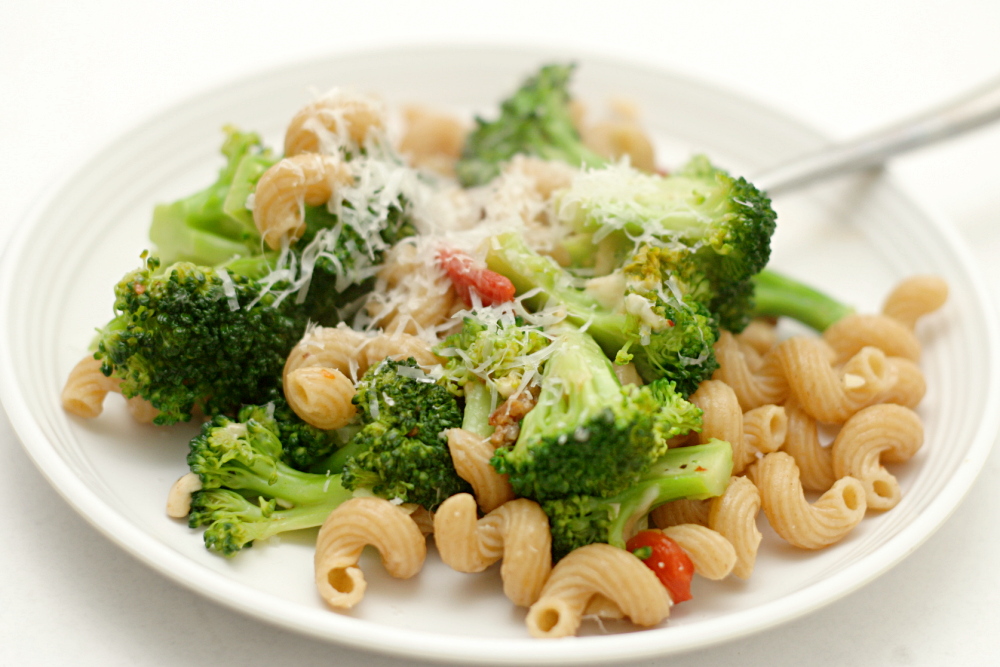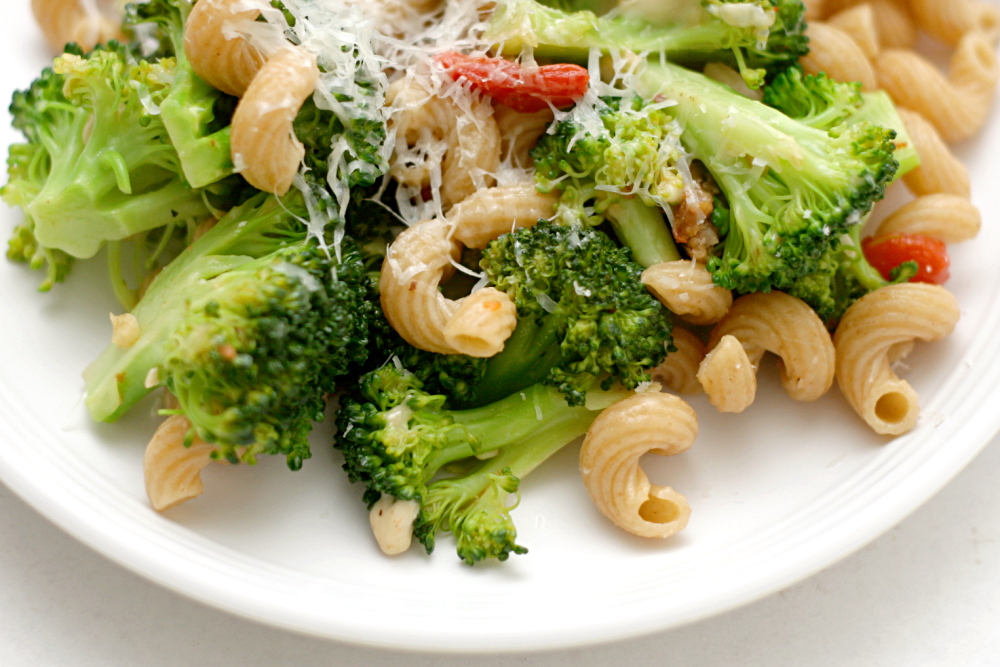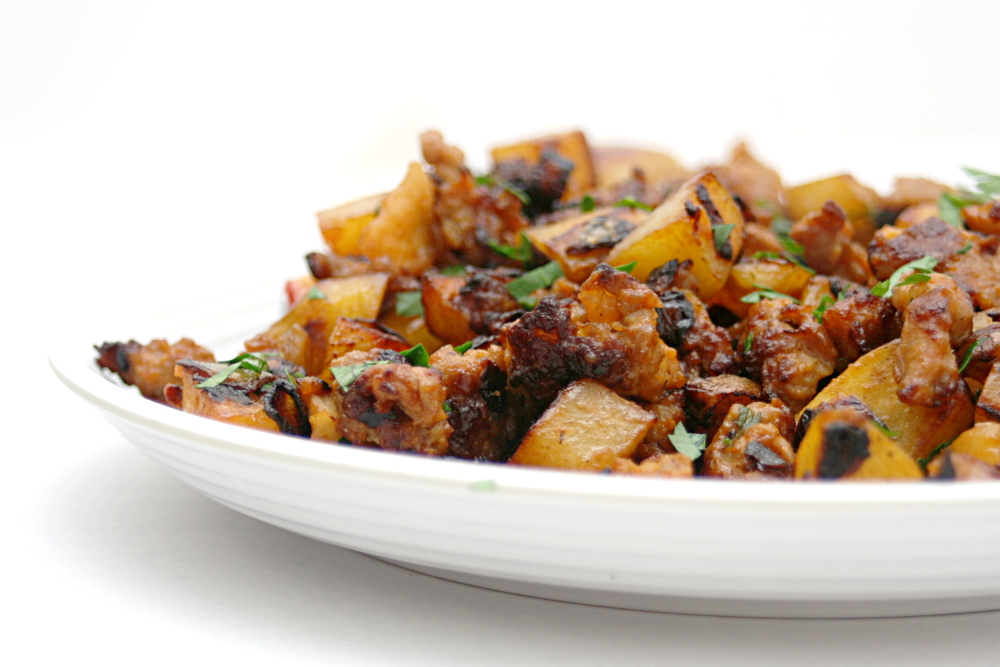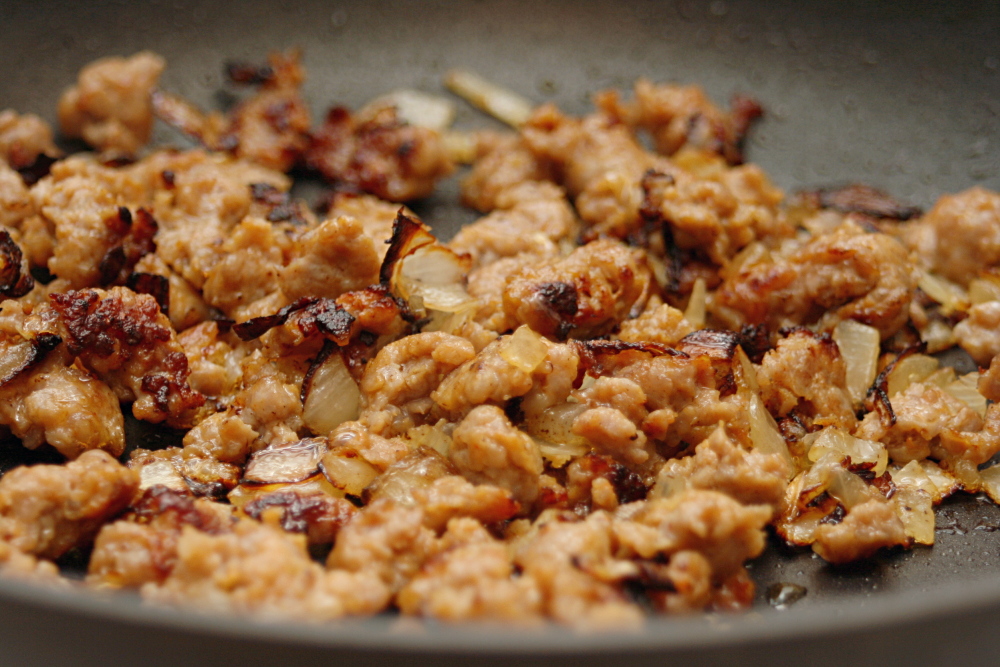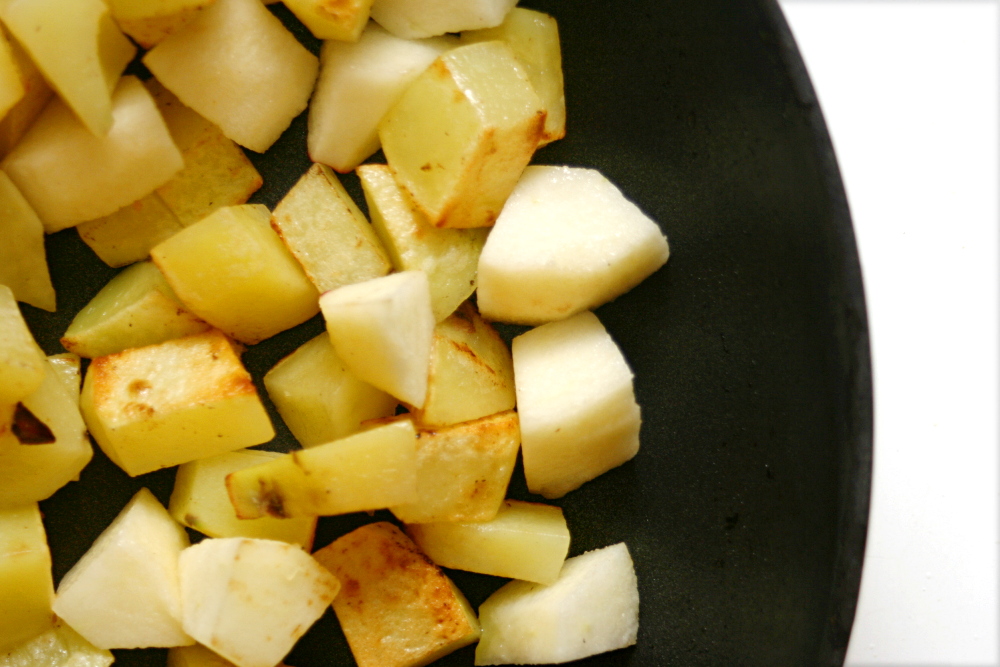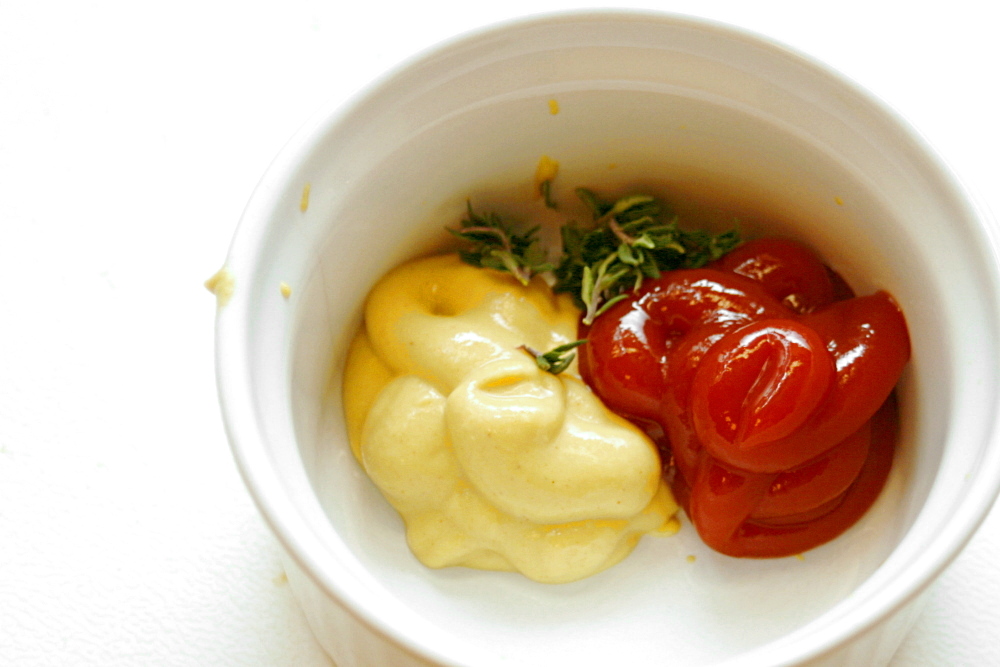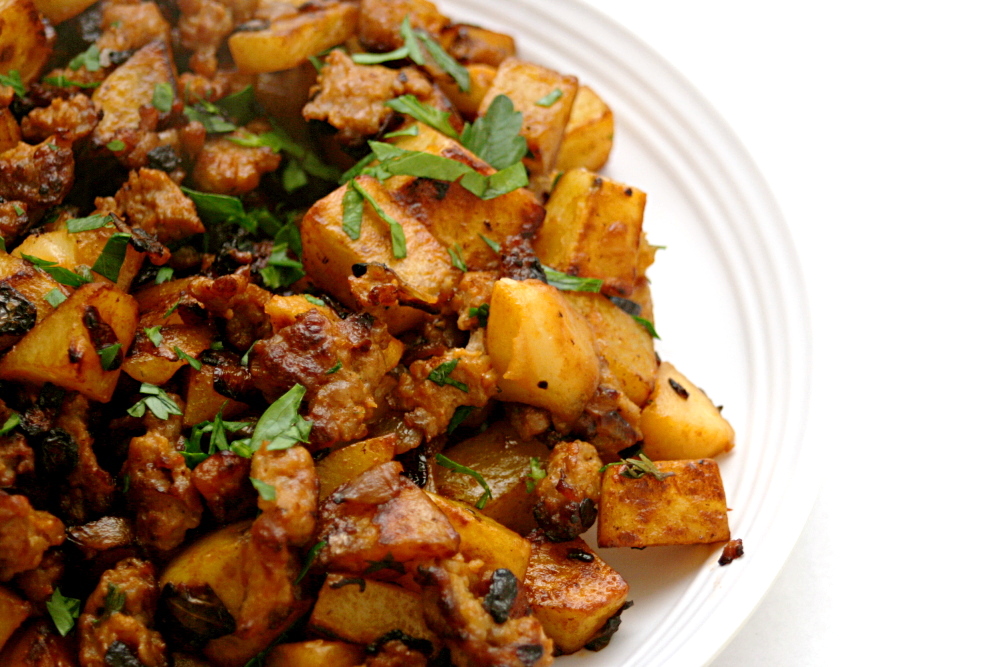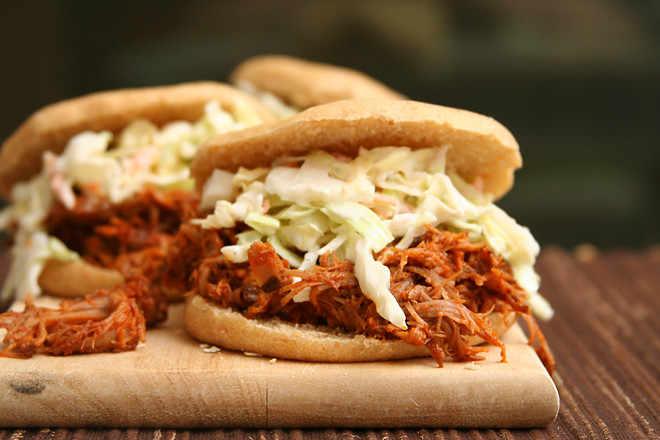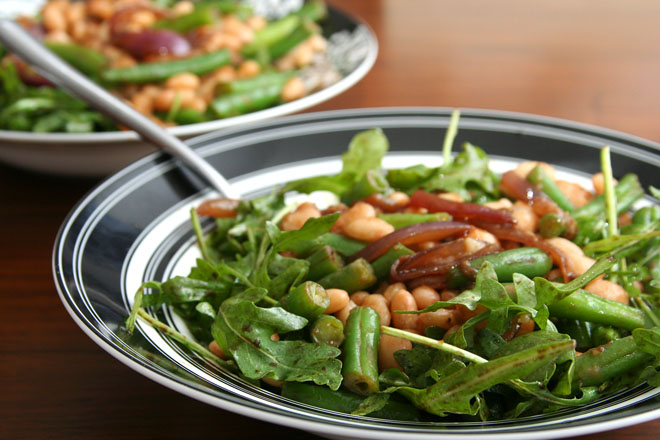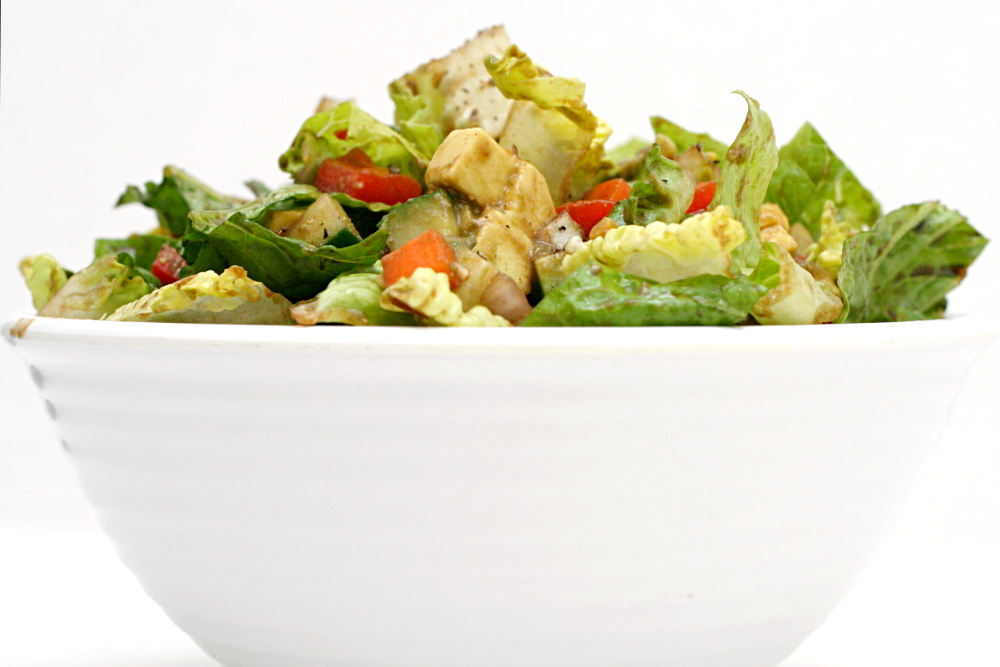
Last month, I was looking at pictures with my 2-year-old nephew, and when we came to a picture of my sister when she was six months pregnant, he pointed to her and said, “That’s Aunt Bridget!” Wow, thanks buddy. I know my pants fit kind of tight lately, but at least they’re size-six pants!
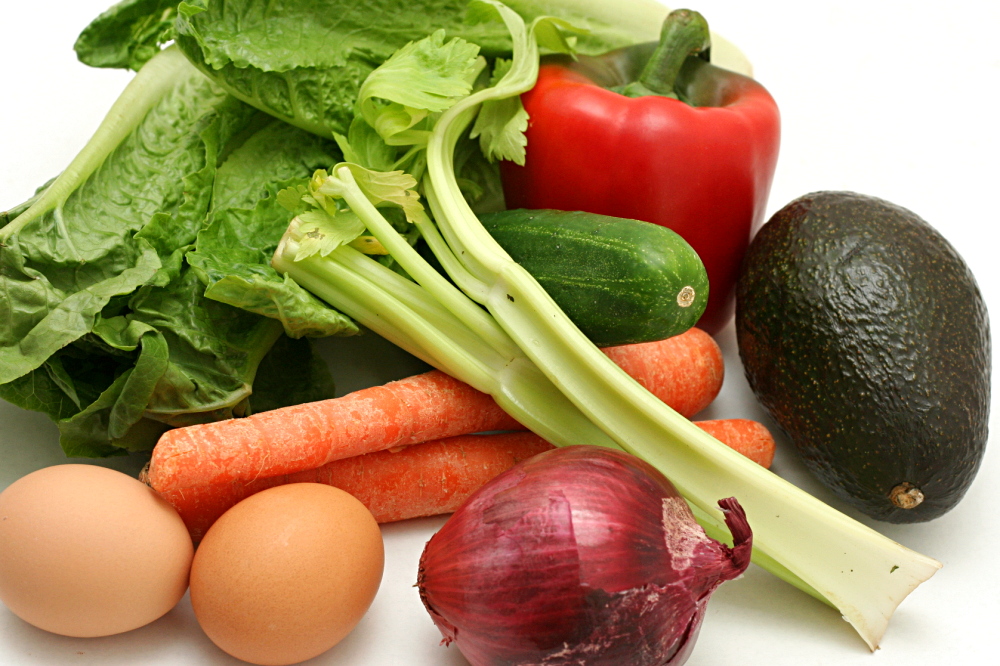
So I’m thinking I should eat more salads. Okay, that isn’t the reason – mostly, I just like salads. I like salads served either as the main dish or before the rest of the meal. Too often salads are an afterthought pieced together from iceberg lettuce, out-of-season tomatoes, and bottled dressing, and they’re served alongside a meal that they don’t compliment.
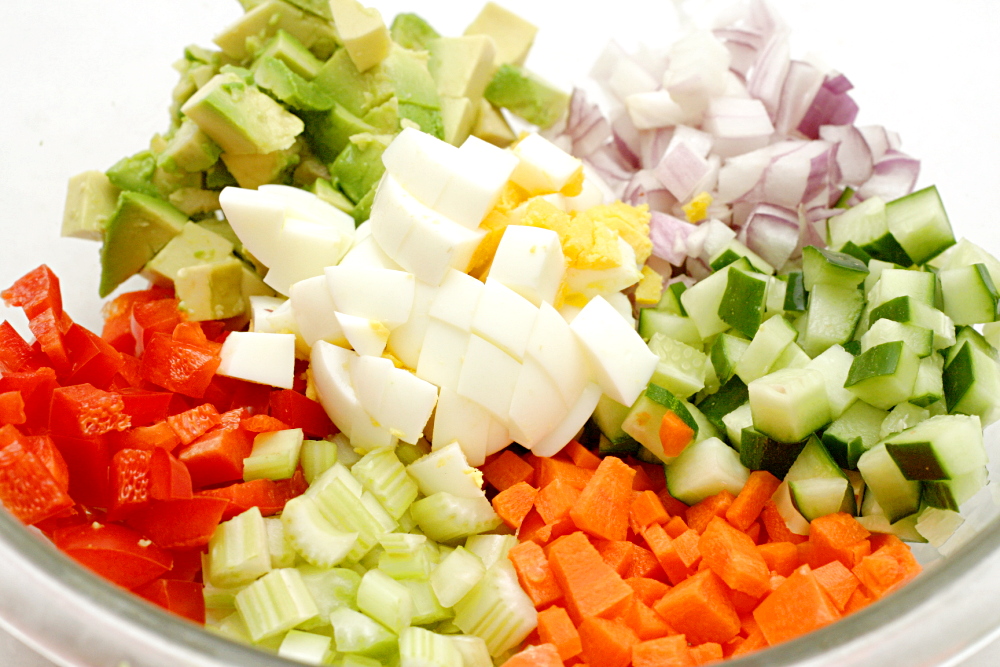
I know chopped salad hardly needs a recipe – just take your favorite vegetables and serve them over lettuce. I’m just excited about this particular combination – in about a week, I had it for dinner twice and lunch once.

My salad includes romaine lettuce, along with carrots, cucumbers, celery, red pepper and red onion. I added hard-boiled eggs for protein and avocado to mellow the tartness of the vinaigrette. I chopped everything except the lettuce into about ¼-inch cubes, which made them easy to scoop up with a fork. There’s just enough lettuce to get maybe one small piece with each forkful of chopped vegetables.
Nothing makes me feel healthier than eating a big bowl of salad for dinner. And that makes me look forward to dessert that much more.
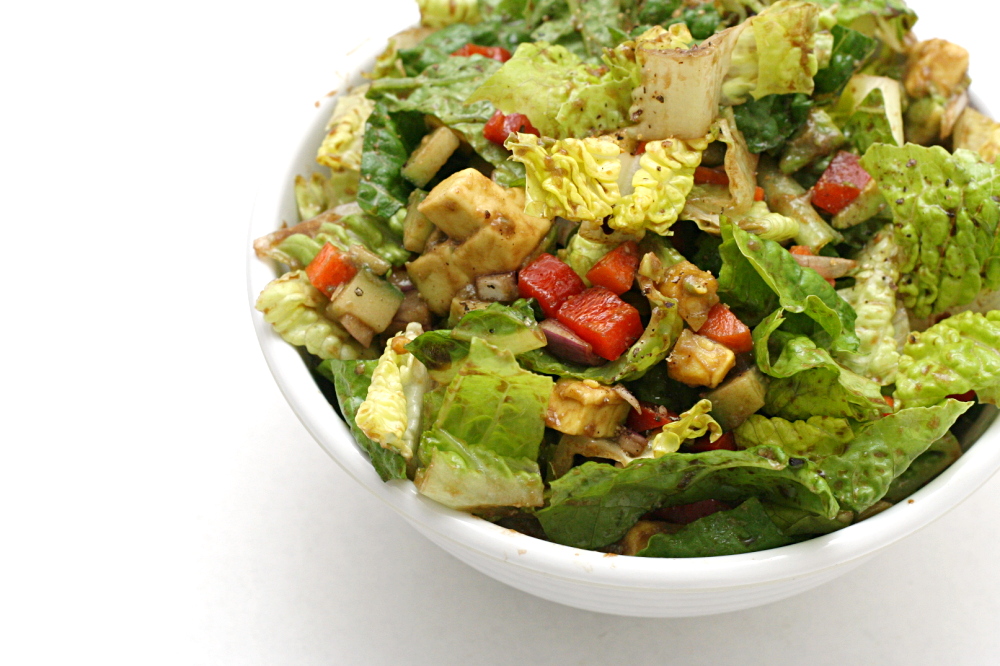
Chopped Salad (adapted slightly from Mark Bittman’s How to Cook Everything Vegetarian)
Serves 4
Vinaigrette:
2 tablespoons vinegar – good choices include balsamic, sherry, red wine, white wine
¼ teaspoon salt
pinch black pepper
4 tablespoons extra virgin olive oil
2 medium carrots, peeled
4 stalks celery stalks, preferably from the heart, washed
1 medium red onion
1 medium red bell pepper, washed
1 regular-sized cucumber or 2 english cucumbers, washed
1 avocado, halved, seed removed, flesh scooped from skin
2 hardboiled eggs, peeled
2 romaine hearts, washed and dried
1. For the vinaigrette: Combine all ingredients in a jar with a tightfitting lid and shake until combined.
2. For the salad: Chop all ingredients except romaine into ⅛- to ¼-inch cubes and place in large bowl. Cut romaine into approximately 1-inch pieces and add to bowl.
3. Add vinaigrette to salad ingredients and mix thoroughly. Serve.
